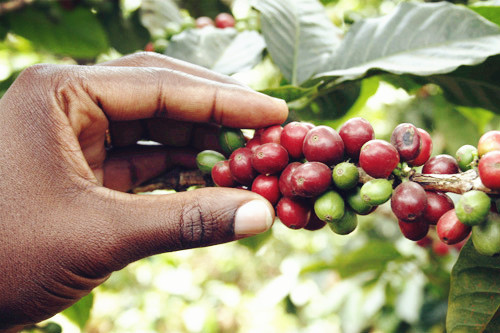Costa Rica Tarazu Diamond Villa washing SHB Kaddura
Costa Rica Finca Montanas del Diamante
Country: Costa Rica
Grade: SHB
Producing area: Tarazhu
Producer: Tarazhu local small farmers
Treatment: washing
Variety: Kaddura, Kaduai
Manor: Diamond Hill Manor
Flavor: soft orange notes, toast, caramel cocoa sweet
The taste is clean

Costa Rican coffee plants were imported from Cuba in 1779 and exported for the first time in 1820. There are now about 32000 coffee farmers, with an average of less than 10000 yuan per farmer. Costa Rica has a population of 410 million (2006), an active coffee planting area of 82500 hectares, an annual output of 1.7 million bags (per bag of 60kgs), and an annual consumption of 38 bags in the country, with an average annual consumption of 5.5kgs per person, which is higher than that of Japan (4kgs). At present, the average Taiwanese is only slightly higher than 1kg. Costa Rica is the first country where coffee was first introduced into Central America. It has a long history. The coffee organization is self-produced and the marketing system is complete. Because there are many volcanoes in China and the United States, and there are light and natural weather of the land, the coffee produced has the characteristics of micro-climate conditions in the Pacific and Atlantic currents and seas at the same time. In terms of quantity and quantity, Costa Rican coffee has always been recognized by the world, and it is regarded as one of the world's high-grade coffee. Costa Rican coffee has been planted for more than a century. It was first planted on the slopes of the Poas and Barva volcanoes. Today it is known as the Central Valley (Central Valley). The seven main coffee producing areas are divided from northwest to south, along the central plateau of the interior. The fertile volcanic ash, abundant volcanic ash and moderate rainfall in Costa Rica's volcanic terrain, as well as the steady rainfall, are all one of the factors that make coffee a major agricultural product in Colombia. The seven major production regions are: Tarrzu, Tres Rios, Orosi, Central Valley, West Valley, Turrialba and Brunca.
The cultivation of coffee in Costa Rica has a long history. In the past 10 years, the new "dry" treatment has become a trend. The new method of "honey treatment" is called "honey treatment", which uses the scraping machine to complete the scraping degree of the pulp.
Important Notice :
前街咖啡 FrontStreet Coffee has moved to new addredd:
FrontStreet Coffee Address: 315,Donghua East Road,GuangZhou
Tel:020 38364473
- Prev

Niagara Jim Molina Manor Honey treatment of Red bourbon Fine Coffee
Nicaragua Honey Process Red Bourbon country: Nicaragua production area: La Sabana, Madriz altitude: 1400-1450m harvest time: December to March next year treatment method: honey treatment variety: red bourbon treatment plant: Jaime Jose Molina Fiallos flavor: chocolate, red fruit, fruit juice Nicaragua is mainly divided into four major producing areas.
- Next

Ethiopian sun aricha Yega snow caffeine G1
Ethiopian Yirgacheffe Aricha G1 country: Ethiopia grade: G1 producing area: Yegashafi Gediyo altitude: 1900-2100 m treatment: sun varieties: original species producer: Kebel Aricha flavor: light fermented wine, sweet orange, spices, honey sweet
Related
- Does Rose Summer choose Blue, Green or Red? Detailed explanation of Rose Summer Coffee plots and Classification in Panamanian Jade Manor
- What is the difference between the origin, producing area, processing plant, cooperative and manor of coffee beans?
- How fine does the espresso powder fit? how to grind the espresso?
- Sca coffee roasting degree color card coffee roasting degree 8 roasting color values what do you mean?
- The practice of lattes: how to make lattes at home
- Introduction to Indonesian Fine Coffee beans-- Java Coffee producing area of Indonesian Arabica Coffee
- How much will the flavor of light and medium roasted rose summer be expressed? What baking level is rose summer suitable for?
- Introduction to the characteristics of washing, sun-drying or wet-planing coffee commonly used in Mantenin, Indonesia
- Price characteristics of Arabica Coffee Bean Starbucks introduction to Manning Coffee Bean Taste producing area Variety Manor
- What is the authentic Yega flavor? What are the flavor characteristics of the really excellent Yejasuffi coffee beans?

